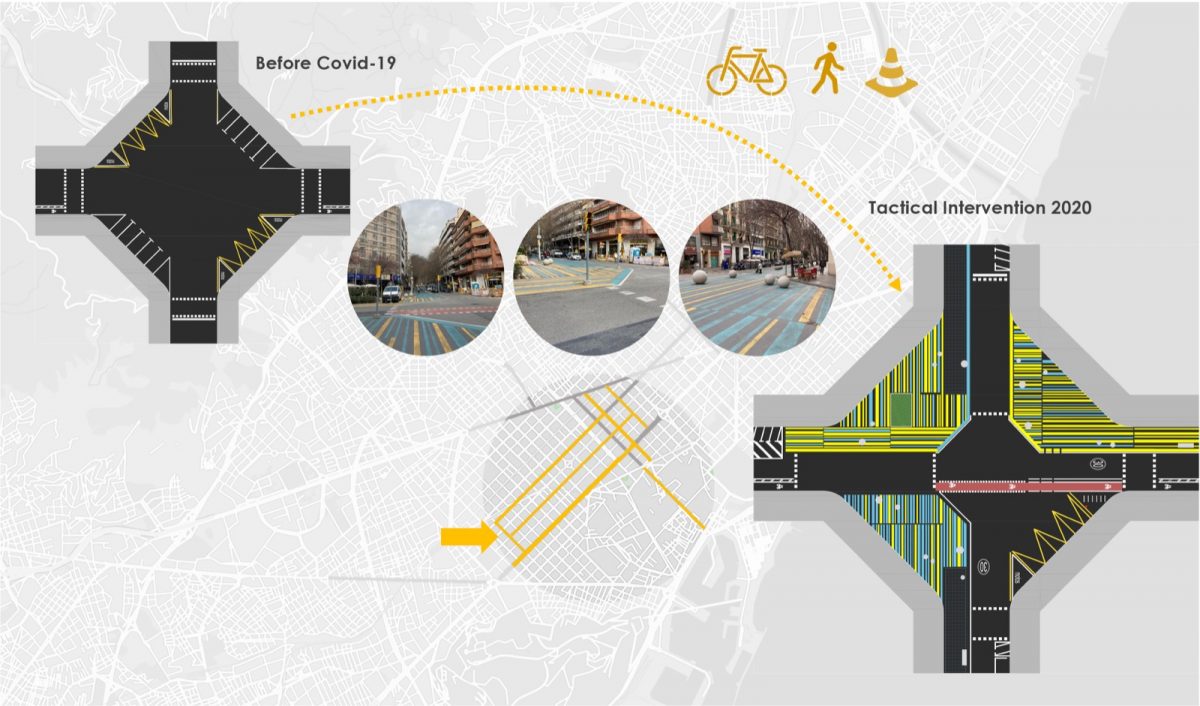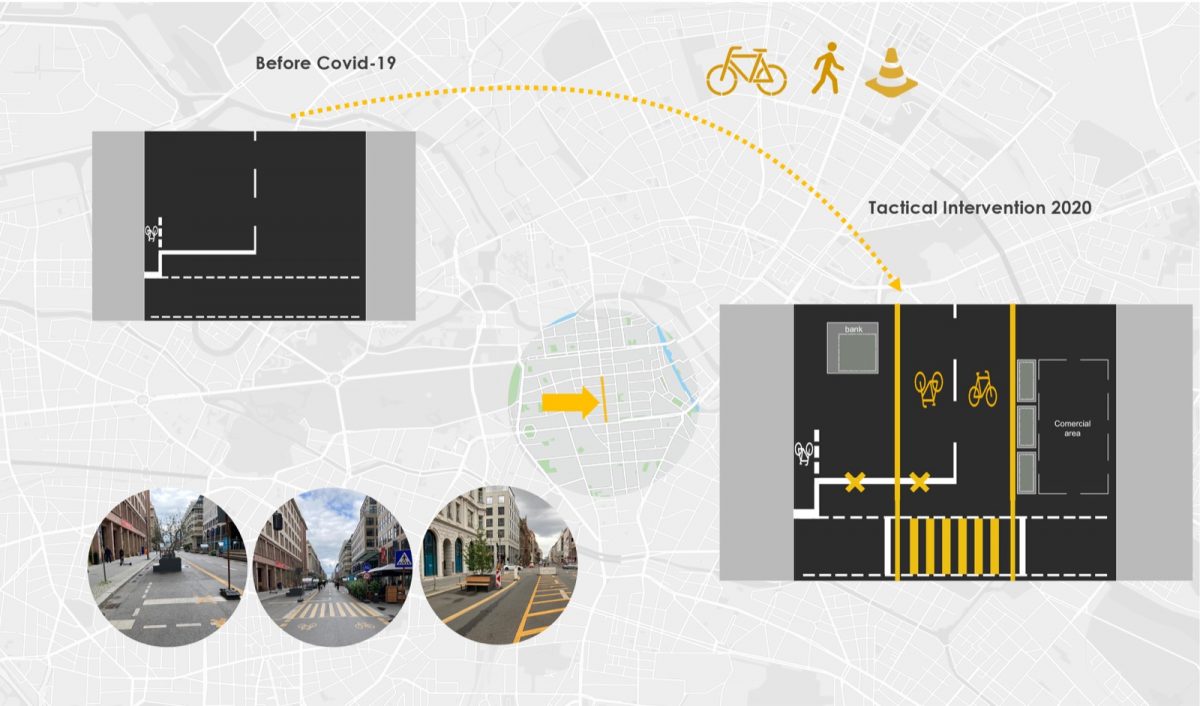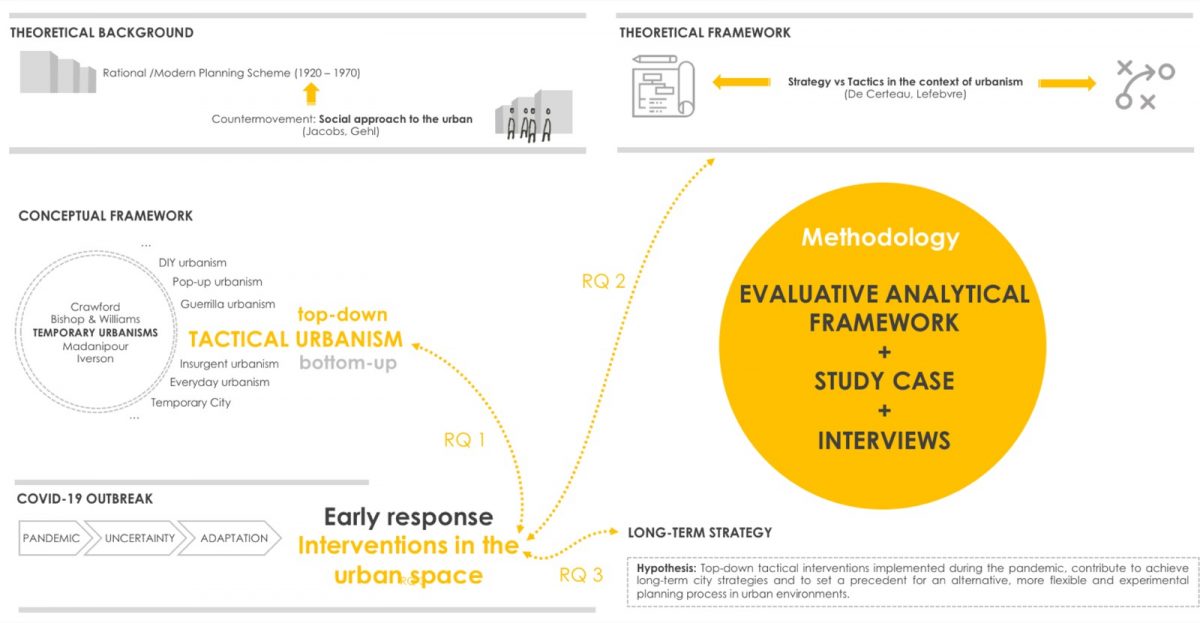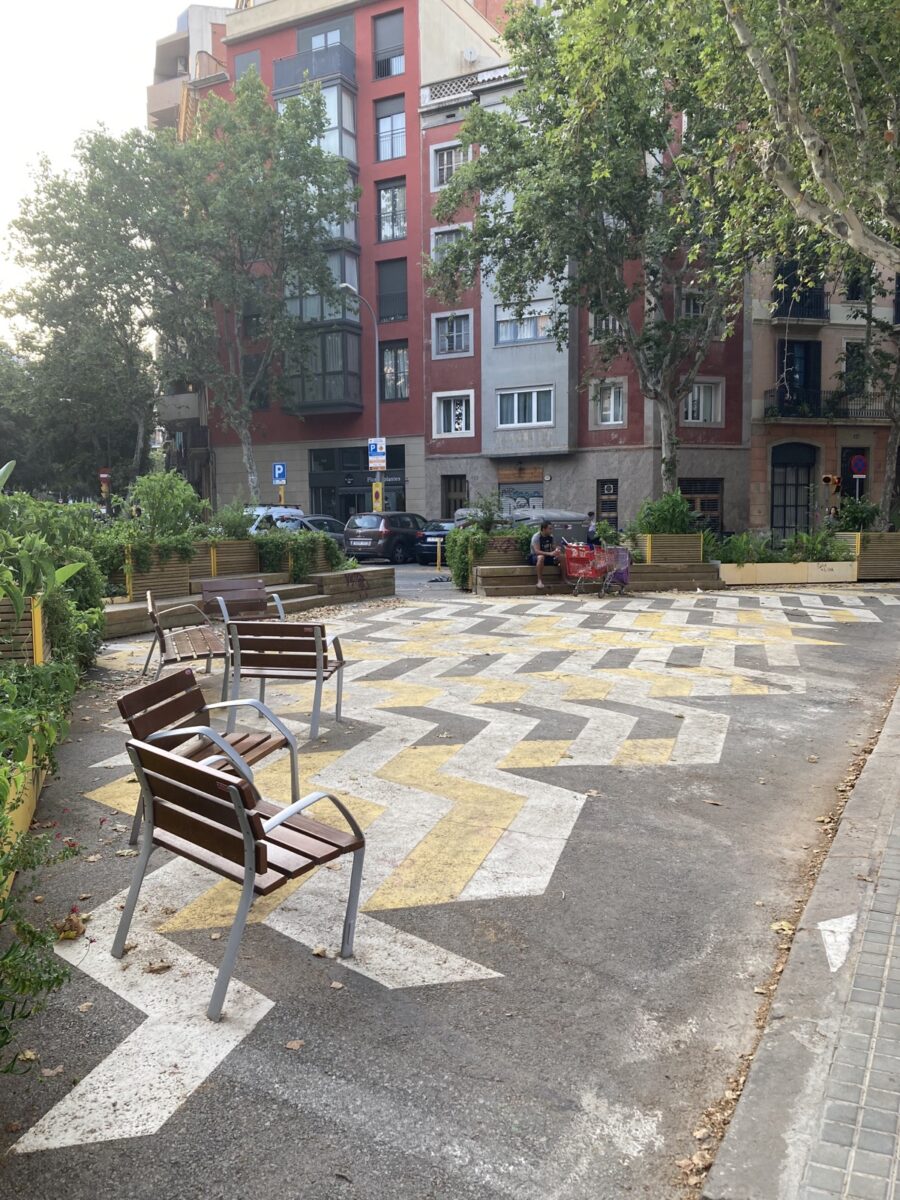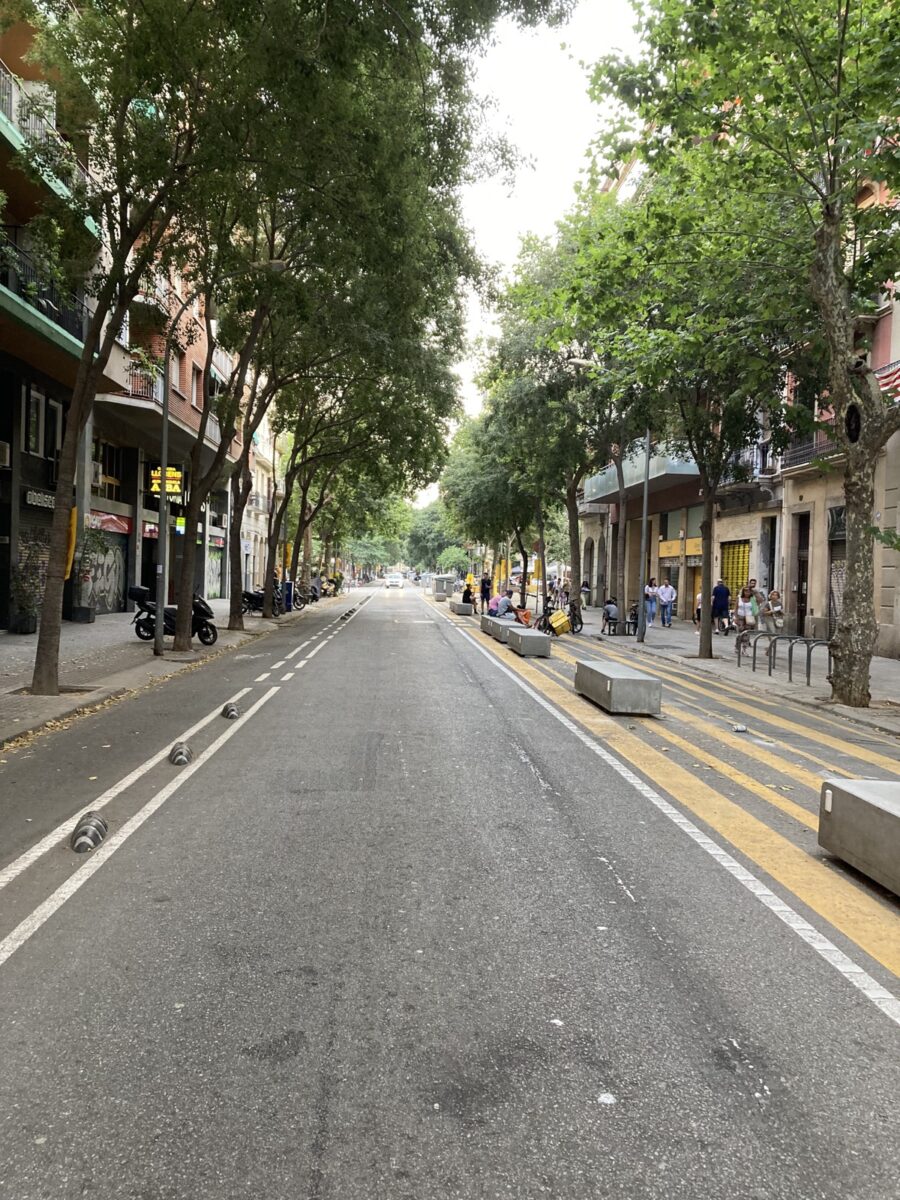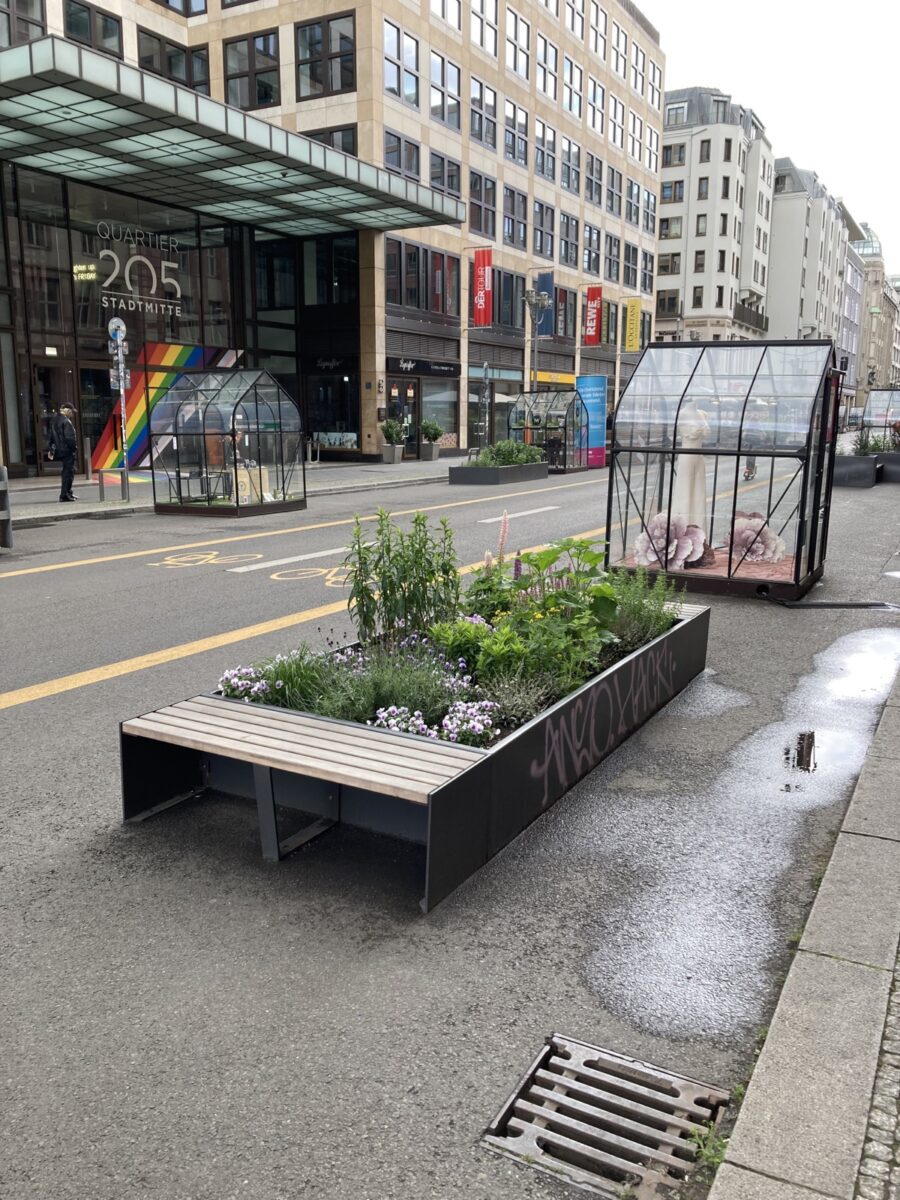Elisenda Sanclimens MA International Planning and Sustainable Development
Top-down Tactical Urbanism in the Context of the COVID-19 Pandemic: From temporary interventions to long-term urban reshaping
THE OUTBREAK OF COVID-19 forced us to rethink form and space allocation in our living environments, and our priorities in terms of mobility, social interaction, health and economic models. This unpredictable event gave us the opportunity to question our settled planning processes and to explore alternative approaches to adjust our cities in accordance with the emergency. In other words, the world crisis forced us to undertake action, to upgrade collective resilience, to change rooted social behaviours, and to question settled planning processes that seemed invulnerable until then.
As a quick response to the pandemic, several cities used tactical urbanism as a flexible, low-cost and reversible tool to reshape their streets in a short period of time. Overall, those temporary measures targeted the redistribution of the street surface, allocating more space to pedestrians and promoting active mobility at the expense of motorised traffic. Using an evaluative analytical framework and through an extended literature review, this study explores the tactical nature of such interventions and its relationship with the achievement of long-term urban strategies for sustainable development. Case study analyses in the cities of Berlin and Barcelona investigate the planning processes behind the tactical interventions in the emergency context and establishes a correlation between tactics and strategy. The results of the study underline the role of tactics to accelerate transformation processes in an urban environment, as well as the importance of a coordinated and pragmatic decision- making process within the planning authorities. The study concludes that tactical urbanism can be a suitable tool to introduce changes and experimentation in the urban space, as a temporary stage towards a long-term, strategy-oriented reshaping of urban space.

